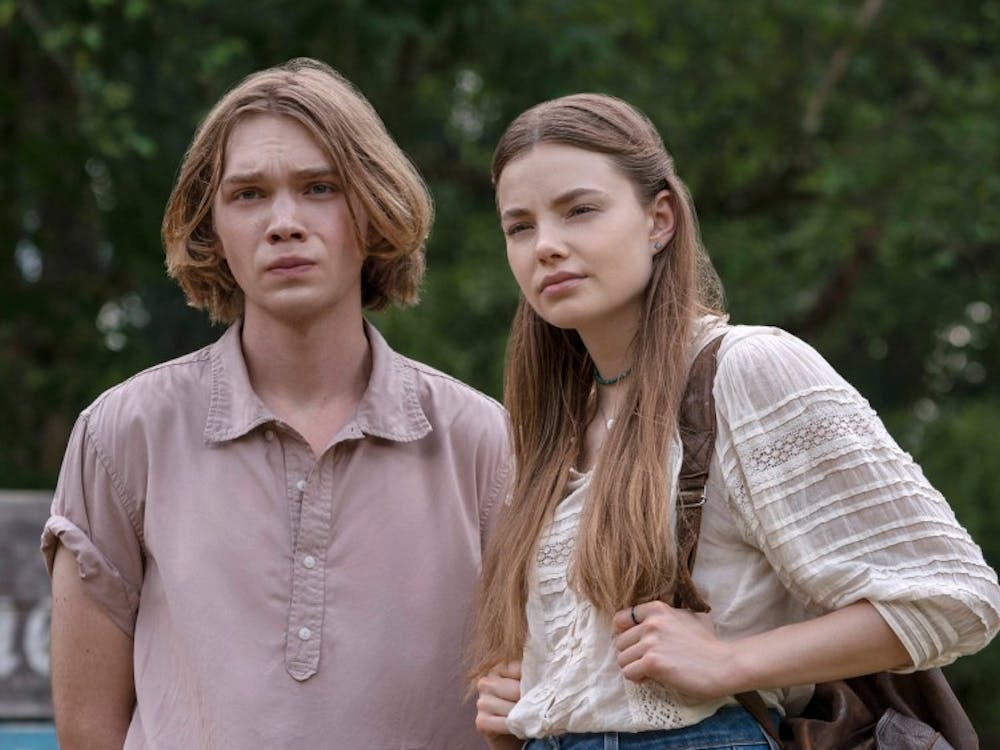John Green’s 2005 teen novel “Looking for Alaska” is one of the few books I actively remember reading outside of the classroom in middle school, and for good reason. It tells the story of shy high school boy Miles “Pudge” Halter as he begins his junior year at a new boarding school in Alabama. Through Miles’s perspective, Green explores a wide variety of subjects many teenagers grapple with, including romance, academic stressors, bullying and booze, while in a mildly unique setting away from direct parental influence and with characters that, to my 13-year-old mind, seemed to avoid easy archetypical classification.
Hulu’s recent adaptation of the novel does the story justice in that it rarely strays from Green’s work, doing so only in ways that better lend themselves to visual rather than written media. That said, the eight-episode series was at times a little boring and clichéd, but this sentiment probably stems from my familiarity with the novel as well as being 21 rather than 12.
The adapted series brings very little new material to Miles’s story. The recognizable changes are generally a result of a shift to a more omniscient perspective, which allows for a wider range of experiences to be shared directly with viewers. In the novel, Miles’s first-person narration prevents readers from learning background information about characters, which makes the story one-dimensional and obfuscates character motivations.
The 2005 setting is charmingly depicted without being too overstated, and executive producers Josh Schwartz and Stephanie Savage—the creative team behind hit mid-2000s teen dramas “Gossip Girl” and “The OC” — successfully avoided any fetishization of the age before the iPhone. Green’s original dialogue remains nearly word-for-word, to the point where I found myself recognizing entire conversations. While some viewers may enjoy being able to see many of the “deep” lines Green is known for in four dimensions, I found the dialogue a bit cringier than I would have liked.
The series is well-cast, with Miles (played by Charlie Plummer) and his love interest (and original Manic Pixie Dream Girl) Alaska Young (Kristine Froseth) leading a rag-tag group of social outsiders at their school. Viewers learn more about each of Miles’s classmates than is ever revealed in the text, as his roommate and best friend Chip “The Colonel” Martin (Denny Love) struggles with issues of racial and socioeconomic discrimination that eventually threaten his place as a scholarship student at the school.
While the setting hasn’t changed, many of the characters’ background storylines are brought to the forefront of the narrative, as the high schoolers deal with fraught romantic relationships, issues at home and the difficulties of living among peers with vastly different means and goals. It’s no wonder that the environment at Culver Creek Academy can feel distractingly immature. The teenagers feign adult relationships and hold conversations over cigarettes, attempting to ascertain the meaning of life while still engaging in vicious prank wars.
Because the adaptation is a perfectly fine retelling of Green’s story that doesn’t bring much new material to the table, I wondered who Hulu’s intended audience is. Book readers may feel underwhelmed by the story as I did. Other teens that are new to the story may not see the appeal, as the characters lack the kind of mystery and allure that seems to draw teenage viewers today. (Alaska excluded, though her entire character has become a solidified archetype since she was written.) Due to my previous experience with the novel, however, I could certainly be the victim of a jaded perspective that comes from knowing the source material too well. Perhaps the viewership experience is vastly different for someone who didn’t read the novel half a dozen times in the eighth grade.
Get The Chronicle straight to your inbox
Sign up for our weekly newsletter. Cancel at any time.

